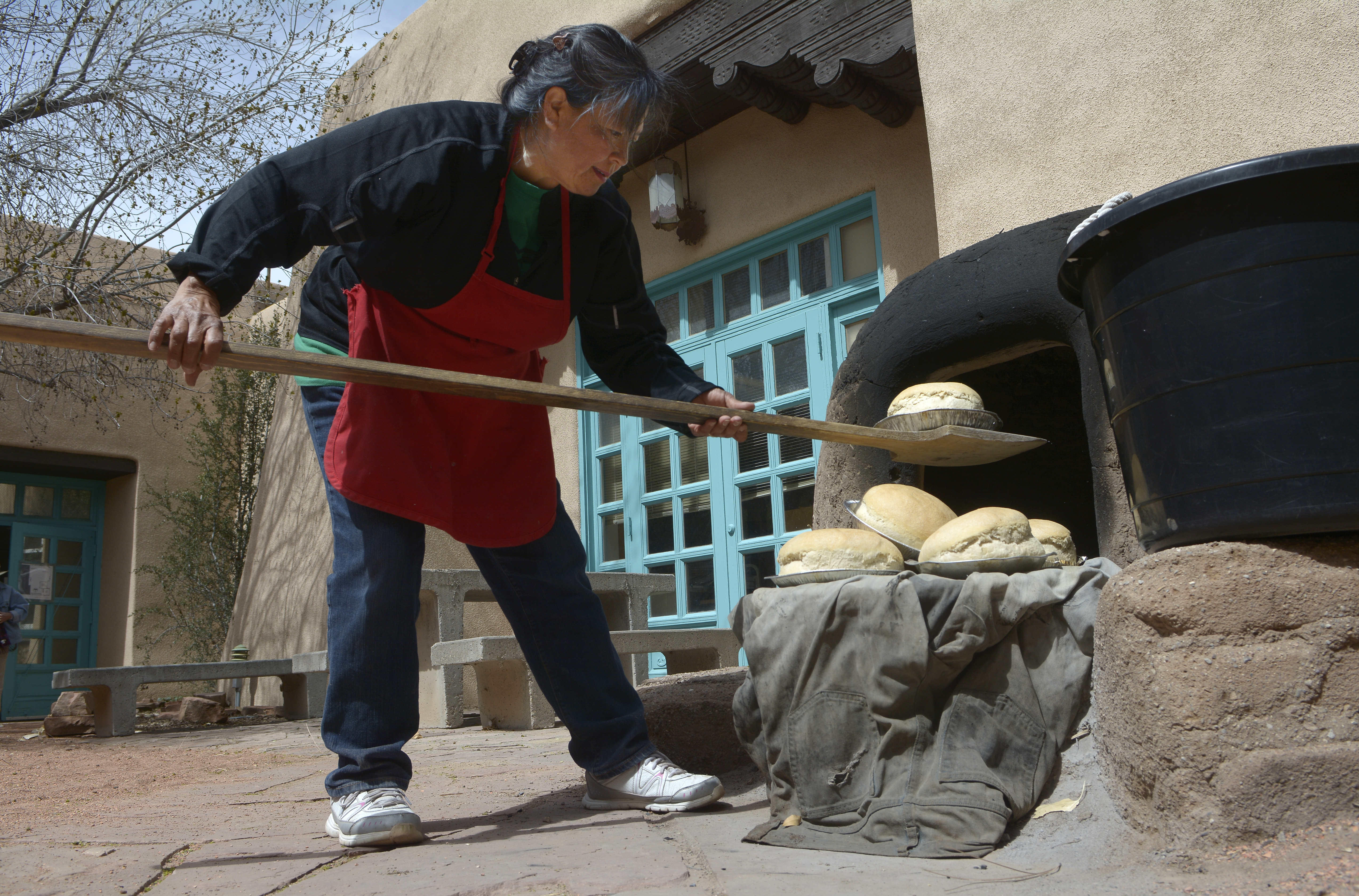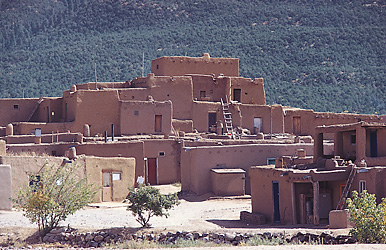Pueblo << PWEHB loh >> are a Native American people of New Mexico and Arizona best known for their apartmentlike traditional dwellings. Pueblo people belong to 21 federally recognized tribes, each of which speaks one of six languages. When Spanish explorers first encountered these people in the 1500’s, they found them living in villages that resembled Spanish towns. The word pueblo means town in Spanish. The Spaniards used the word to refer to both the people and their villages.

According to the 2020 U.S. census, there are about 50,000 Pueblo. Most live in New Mexico. The majority of the Pueblo villages lie along the Rio Grande, in areas between Taos and Albuquerque. A few others, including Laguna, Acoma, and Zuni, lie farther west in New Mexico. The Hopi, a Pueblo people, live in several villages on three mesas (tablelands) in northeastern Arizona. This article discusses the Indigenous (native) people of the Rio Grande pueblos.
Each Pueblo village has its own government and organization, but the Pueblo people remain linked to one another through similar customs. The Pueblo have strong ties to their traditions and homeland. They have lived in the same location longer than any other people of the United States or Canada.
Early history and way of life.
The ancestors of the Pueblo people, formerly called the Anasazi, established villages on the Colorado Plateau thousands of years ago. They began to build homes of many stories about A.D. 900. Between A.D. 1000 and 1300, Ancestral Pueblo culture developed primarily in northern Arizona, northern New Mexico, southern Colorado, and southern Utah. By 1300, many Pueblo had moved south to the fertile valleys of the Rio Grande and its branches.

Some Pueblo built villages in the valleys. Others lived in mountain areas. Desert surrounded many of the valleys, and the people developed irrigation systems so they could grow crops. Pueblo women gathered nuts and other foods, and the men hunted game.
Pueblo villages consisted of stone or adobe (sun-dried brick) structures that resembled apartment buildings. These homes had as many as four stories, and people used ladders to reach the upper levels. Some families of grandparents, parents, children, aunts, and uncles lived in two or more connected dwellings.

Religious leaders governed the villages. The Pueblo held many religious ceremonies to promote harmony and order in the universe. They believed that if universal harmony and order were maintained, the spirits would ensure abundant game and provide sufficient rain for their crops. Pueblo men performed Kachina dances, in which they represented spirits of Earth, sky, and water. The dancers wore masks that symbolized the spirits. Most pueblos had underground chambers called kivas that were used for ceremonies and meetings.
The Pueblo made high quality, often boldly painted pottery. In addition, they wove ornately decorated baskets as well as cotton for their clothing.
Contact with other peoples.
In 1598, the Spaniards established a settlement near a Pueblo village. They forced the Pueblo to work for them and to give them some of their crops. The Spaniards also forced the Pueblo to follow Roman Catholic ways. The Pueblo pretended to accept Catholicism, but they secretly continued their own religious practices.
In 1680, the Pueblo leader Popé led his people in a revolt that ended Spanish rule. They remained free until 1692, when the Spaniards again gained control. In return for yielding control, the Pueblo demanded an end to forced labor and to interference in their internal affairs, particularly their religion.
From 1821 to 1846, Mexico ruled the Pueblo lands. The United States gained the territory from Mexico as a result of the Mexican War (1846-1848). In the Treaty of Guadalupe Hidalgo of 1848, the United States agreed to uphold the Pueblo’s title to their lands, which had been recognized by both the Spanish and the Mexican governments.
Through the years, the Pueblo have sought greater economic and political rights. In 1970, for example, the pueblo of Taos won title to Blue Lake, a lake sacred to the Indigenous people of Taos. The government had made it part of a national forest. Several pueblos have casinos, which have given the people increased economic stability.
The Pueblo today
continue to follow many of the traditions that their ancestors established centuries ago. Most Pueblo practice their ancient religion, though some observe certain Catholic customs. Most of the Pueblo have their own constitution and elect their own leaders, but religious officials also play an important role in Pueblo society. The majority of Pueblo work in cities and towns, and many have professional careers. The Pueblo also make baskets, jewelry, pottery, and weavings and sell almost all their crafts.

